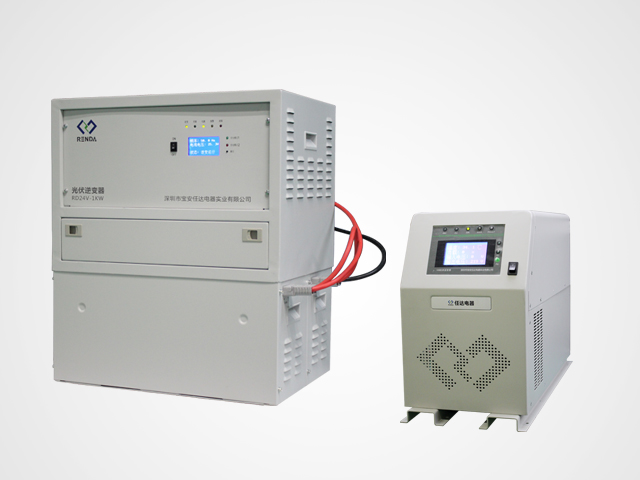Photovoltaic inverter is an inverter used in solar photovoltaic power generation system and is an important component of photovoltaic system.
Photovoltaic inverters are mainly used in the field of photovoltaic power generation.
product features
● The controller module is controlled by M P P T and the maximum conversion efficiency is as high as 9 7 %.
●modular design, Strong compatibility and easy maintenance
● adopt digital control strategy , the whole machine control is flexible and accurate
● Perfect protection and alarm functions , which makes the system have high reliability
●The output adopts power frequency transformer isolated output , high security, high reliability
●Intelligent artificial interface , which can visually display various parameter information of the product
●Rich menus, Easy to upgrade and expand.
automatic operation and shutdown function
after sunrise in the morning, the solar radiation intensity gradually increases, and the output of the solar cell also increases, and when the output power required for the inverter to work is reached, the inverter automatically starts to operate. After entering operation, the inverter will monitor the output of the solar cell module at all times, as long as the output power of the solar cell module is greater than the output power required for the inverter to work, the inverter will continue to run until sunset shutdown, even on rainy days the inverter can operate. When the output of the solar cell module becomes smaller and the output of the inverter approaches 0, the inverter forms a standby state.
maximum power tracking control function
the output of the solar cell module varies with the intensity of solar radiation and the temperature of the solar cell module itself (chip temperature). In addition, since solar cell modules have the characteristic that the voltage decreases with the increase of current, there is an optimal operating point to obtain the maximum power. The intensity of solar radiation varies, and obviously the optimal operating point is also changing. Relative to these changes, the operating point of the solar cell module is always at the maximum power point, and the system always obtains the maximum power output from the solar cell module, this control is the maximum power tracking control. The biggest feature of inverters for solar power generation systems is that they include the function of maximum power point tracking (M P P T ).



